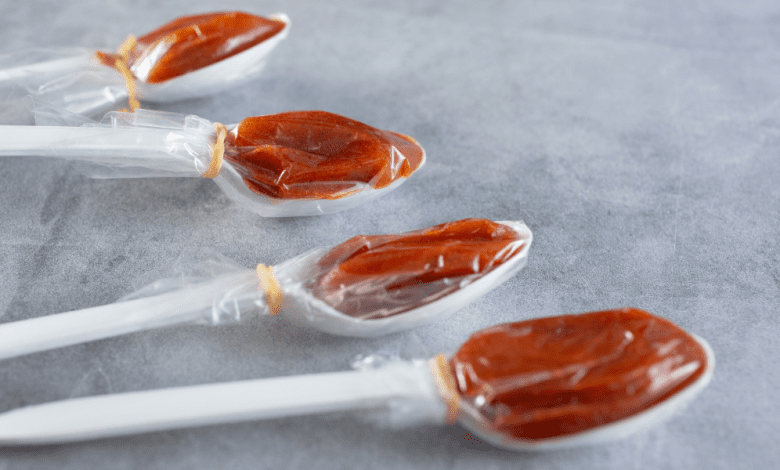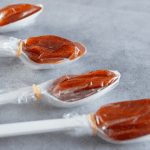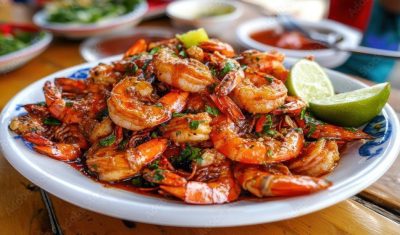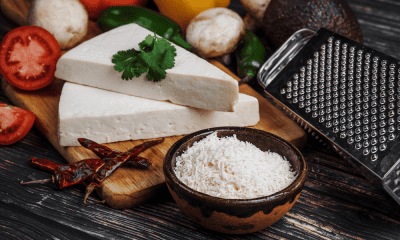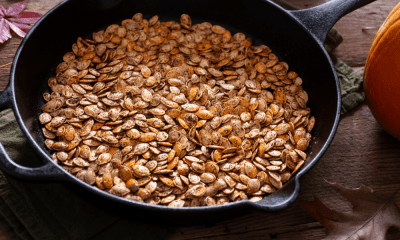Explore the Unique Taste of Tamarind Candy at the Mexican Candy Store by Mexicrate
I remember first tasting a tamarind-flavored lollipop at a local fair in Mexico. I was around eight years old and had no idea what to expect from this brownish, somewhat sticky candy. But once I took a bite, I experienced a whole new world of sweet and sour mixed with a subtle spicy flavor. I didn’t realize it then, but that was my first real introduction to tamarind, an iconic ingredient in Mexican candies. These days, I sometimes enjoy turning those same flavors into a fun Mexican candy shot for parties. Fast-forward a few years, and now I can’t pass by a Mexican candy store by Mexicrate without grabbing a few packets of tamarind candy to enjoy at home!
[ingredientes_receta]
What Makes Tamarindo a Favorite Among Mexican Candies?
I love exploring data del confections from popular Mexican candy culture—whether it’s a luscious caramel swirl, a wafer-based problems treat with obleas flavored with fruit essences like obleas mango, or gum packed with tangy goodness. These sweet treats all share a light, crispy wafer texture and a fun twist on classic flavors, making them perfect for anyone looking to indulge in a taste of Mexico.
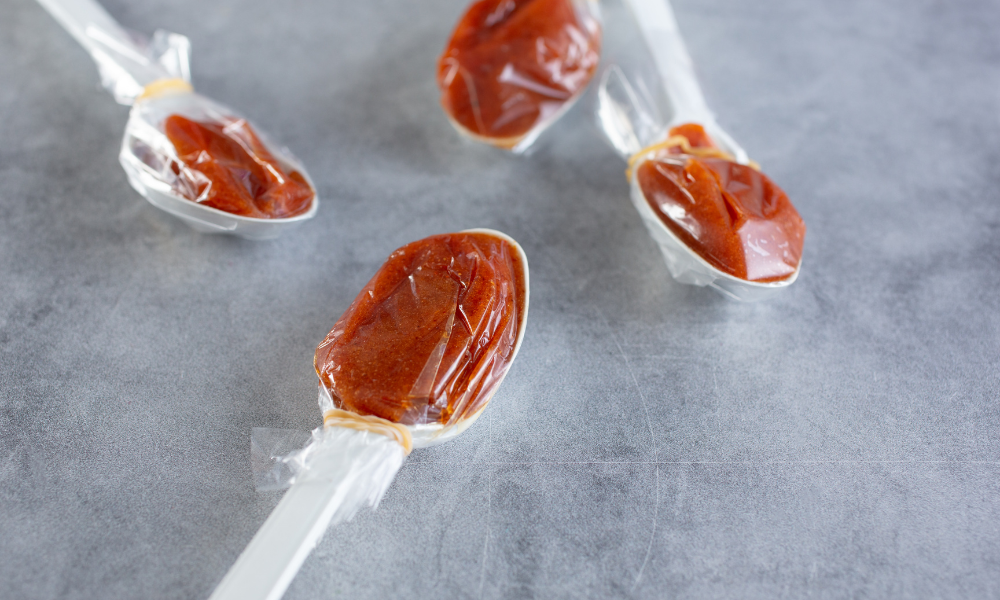
Chef’s Tip: 🍊 If you prefer less tartness, use half the amount of orange or lime. You can always add more if you want to dial up the tang.
Understanding the Tamarind Flavor Profile
Tamarind is known for its tangy, sour punch blended with a sweet undertone of obleas. Many popular candies from Mexico rely on the pulpy tamarind pulp to deliver that unique taste. You’ll often see “tamarindo candy,” referencing the combination of salt and chili powder coating the outside. This tamarind flavor is unlike anything else, offering a mouthwatering dance of sweet and sour, especially when paired with obleas. It’s no wonder tamarind candy shot beverages have become a favorite party drink in some regions.
Why is Tamarind Mexican Candy So Popular?
Part of tamarind’s charm is how it excites taste buds with its spicy edge—sometimes from chamoy or chili powder—and its intriguing sweet side. This tropical fruit’s pulp can become all kinds of yummy treats, from soft candy pastes to hard candy lollipops. When you look at a shelf full of different candies in Mexico, you’ll notice the tamarind candy selection stands out. People love the tangy, sour spark it brings, plus the sugar that balances the entire candy taste.
The History of Tamarind in Mexico
Although tamarind grows in many tropical locations, it found a unique home in Mexico after Spanish colonization introduced it from Asia and Africa. Over centuries, Mexico blended this fruit’s tangy paste with local flavoring, sugar, and chili, creating a delicious treat that remains a staple of many local familiar favorites. Tamarind also appears in everyday cooking, from spicy flavor salsas to refreshing aguas frescas. So, it’s no surprise that tamarindo candy is a favorite for kids and adults alike.
Which Tamarind Mexican Candy Types are Best Sellers at the Mexican Candy Store?
Pro Advice: 🍃 Test your candy’s doneness by dropping a small amount into cold water. If it forms a soft, pliable ball, you’ve reached the “soft ball” stage.
Top Tamarind Soft Candy Options
Soft tamarindo candy often features a gooey inside. A leading example is Pulparindo, a brand of candy made from tamarind pulp, chili, salt, and sugar. Pulparindo offers a delight of sweet, sour, and spicy flavors combined. Some even call it a “gummy” type—though not precisely gummy, it does have a chewy texture that reminds you of fruit leather. With each bite, you get that sweet and occasionally salty swirl, plus a mild heat that keeps you nibbling for more.
Exploring Hard Mexican Candy Varieties
Not everyone prefers a soft chew. If that’s you, you might enjoy hard candy versions of tamarind. Usually formed into round pieces or shaped into a lollipop, these candies deliver a tamarind flavor slowly as you suck them. The spicy or salty coating can intensify your first bite, but the sweet fruit taste emerges once you break through. If you’re looking for a new favorite in hard-candy form, try a tamarind “sucker” with chili-lime spicy dust.
Unique Tamarind Lollipops and Their Taste
No assortment of tamarind candy would be complete without lollipops. These popular treats come with a powdery or syrup coating, often featuring a chamoy-based sauce. At the Mexican candy store by Mexicrate, you might find lollipops shaped like watermelon slices, mango slices, or even pineapple wedges, each lollipop coated with tamarind pulp. Sometimes labeled as a “tamarind-flavored sucker,” they can also incorporate strawberry or cherry flavor for a fun combo of tastes. The spiciness level can vary, but each type of tamarind lollipop has that signature tang.
How Does the Flavor of Tamarind Candy Evolve with Spices?
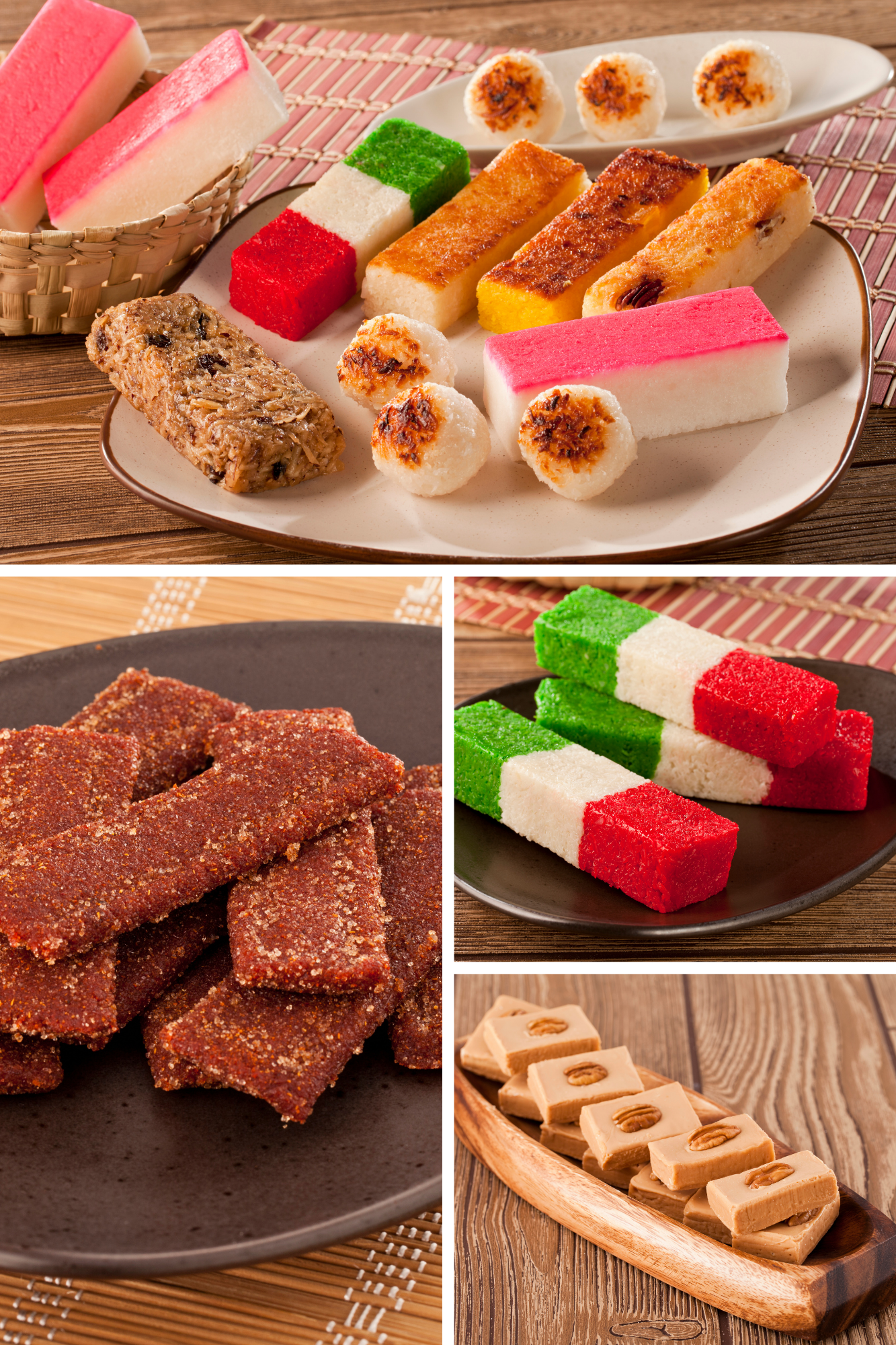
Expert Trick: 🍯 Stir constantly as it boils—tamarind can scorch quickly at the bottom of the pot, especially once the sugar dissolves.
The Spicy Appeal of Chamoy Candy
One reason tamarind thrives in Mexico is because it’s so perfect for layering with other flavors. Chamoy candy, for instance, uses a salty, sweet, sour, and occasionally spicy sauce (chamoy) that heightens the tang of tamarind. This sauce often includes dried fruit, vinegar, chili peppers, and sometimes lemon or lime, creating a bold flavoring you can’t help but love. Some specialty candies will squeeze chamoy sauce onto tamarind candy for an extra spicy flavor punch.
Adding Chili Powder for a Kick
Chili powder is a staple in many tamarind-based sweets. Whether dealing with pulparindo bars or tamarindo candy lollipops, chili powder has a spicy flair that complements tamarind’s sour and sweet sides. This combination of salt and chili powder makes Mexican candy so famous: you get that intriguing sweet-sour-spicy trifecta each time you bite in.
Combination of Sweet, Sour, and Spicy in Tamarind Candy
It’s all about the combination of tamarind candy. You get sweet from sugar or fruit syrups, sour from the fruit’s natural acidity, plus spicy from chili or chamoy. Some candies even include extra salty undertones, adding one more dimension. The result is a treat that taste buds remember—it differs from typical Western confections. This is precisely why many popular candies in Mexico revolve around tamarind.
How to Enjoy Tamarind Candy in the United States?
🔥 Quick Tip: 🌶️ For extra heat, sprinkle in a pinch of cayenne or your favorite chili powder near the end of cooking.
Finding Mexican Candy Near Me
If you’re in the U.S. and looking for Mexican candy near me, you can often find it in local grocery stores with international aisles, or you might make a purchase online (or try a Mexican candy shot). You can also find a range of tamarind candies at the Mexican candy store by Mexicrate—they ship across the country, making it easy to dive into tamarind goodness. If you’d rather pick it up in person, many neighborhoods with big Hispanic communities have shops with tamarind candy assortments.
Tasting Mexican Candy in the United States
Trying out different candies is half the fun. If you’re new to tamarind, you might want to start with a mild gummy tamarindo candy or a soft candy that’s more sweet than spicy. But if you love a bolder taste, go straight for a powder- or chamoy-coated lollipop. For a lively twist, you might also sample a Mexican candy shot that merges tamarind’s tang with a spicy finish. Everyone has a unique preference, so there’s no right or wrong way to enjoy these treats.
Popular Tamarind Candies You Should Try
Below is a list of tamarind-infused favorites you might spot in American shops or online:
- Pulparindo: A bar made from tamarind pulp, sugar, salt, and chili. Its chew is both tangy and spicy, delivering a memorable flavor burst.
- Tamarindo spoons: Tiny plastic spoons with tamarind paste on them—lick or bite them for a direct taste.
- Watermelon-lime lollipops with tamarind coating: A perfect sweet-sour combo that merges two beloved fruit flavors.
- Tamarindo “spaghetti”: A specialty candy featuring tamarind paste shaped like thin noodles, often served with chamoy syrup.
In some bars, you’ll also find the mexican candy shot, which uses tamarind’s unique tang with chamoy candy or sauce to create a refreshingly sweet-and-sour drink.
What’s the Difference Between Tamarind Candy and Other Mexican Treats?
Chef’s Tip: 🥄 If you like a super-smooth candy, blend the tamarind mixture a second time after straining. Any stray pulp bits get fully broken down.
Comparing Tamarind and Coconut Candy
Coconut candy is a creamy, sometimes crumbly sweet that lacks the tang of tamarind. While coconut candy has a tasty tropical vibe, tamarind candy is all about that sweet, sour, sometimes salty swirl. Both are top choices among mexican candies, but they taste like night and day when it comes to spicy or sour notes.
Exploring Mazapan and Its Unique Texture
Another traditional mexican candy is mazapan, a delicious salty-sweet peanut confection. This peanut-based candy has a crumbly, wafer-thin exterior that melts in your mouth, giving a nutty, treat sensation entirely different from tamarind’s tang. You can’t help but compare these familiar favorites side by side if you have an assortment of Mexican candy. The texture is key: mazapan breaks into peanut-based dust, while tamarind candy can be chewy, sticky, or even hard candy.
How Does Tamarind Candy Stand Out?
Tamarind candy stands out for its tangy brightness and spicy edge. It might incorporate chili-lime or even chamoy for extra depth. If you’re a lemon or strawberry sweets fan, you might also find tamarind and fruit combos. Still, tamarind’s sour-sweet flavors, including mango, pineapple, or watermelon, overshadow the typical fruit candy. It’s a unique mexican holiday staple, especially around times like Day of the Dead, where bold candy flavors rule.
Quote: “Tamarind candies are a perfect example of how Mexico combines tangy fruit with sweet and salty layers, creating a delicious treat that satisfies taste buds of all ages.”
Table: Different Candies from Mexico
| Candy | Key Flavor Notes | Texture | Main Ingredient |
| Tamarind Candy | Sweet, sour, spicy | Soft or hard | Tamarind pulp |
| Coconut Candy | Sweet, tropical | Crumbly or smooth | Coconut flakes |
| Mazapan | Peanut, creamy, crumbly | Breaks easily | Peanuts + sugar |
| Gummy Lollipops | Fruity, can be spicy | Soft gum-like | Fruit syrups + sugar |
| Paleta Payaso | Marshmallow center | Chewy middle | Marshmallow, cherry coating |

Pro Advice: 🍋 Adjust the sugar to match your taste. Start with the recipe’s amount and add more if the tamarind tastes too sour.
Key Takeaways
- Tamarind is a favorite fruit in Mexico that elevates many mexican candies, delivering a sweet, sour, and spicy edge.
- Tamarind candy can be soft candy (like Pulparindo) or hard candy (like a lollipop), each offering a distinct texture and flavor.
- Chili powder or chamoy frequently appears, adding a spicy flavor that interests each bite.
- Tamarindo candy stands out from coconut candy, mazapan, or gummy snacks thanks to its tangy, salty, and sometimes sweet and sour profile.
- If you want to find tamarind candy in the U.S., searching “mexican candy near me” or checking shops like the mexican candy store by Mexicrate is your best bet.
- Popular candies featuring tamarind include Pulparindo, tamarind spoons, and various lollipops—some with watermelon or mango layers. You can even incorporate tamarind into a mexican candy shot for a fun twist on its sweet-and-spicy flavor.
- You can try mixing tamarind with chamoy candy or chili-lime seasoning for an even more thrilling taste, intensifying the sweet-sour combination.
- Mexican candy shot: A delicious shot recipe made with tequila, watermelon pucker, lime juice and Tajín.
Frequently Asked Questions about Mexican Candy
❓ How to make Mexican candy shots?
Mexican candy shots are made by blending tequila, watermelon schnapps, lime juice, and Tajín. Some variations include chamoy for extra spice.
❓ Where to buy Mexican candy?
Mexican candy is available at Latin grocery stores, online retailers, and specialty markets. Popular brands can also be found on Amazon and Walmart.
❓ How to make Mexican candy?
Traditional Mexican candy is made using ingredients like tamarind, chili powder, and sugar. Popular recipes include tamarind balls, chamoy candy, and spicy lollipops.
❓ Are Hi-Chews Mexican candy?
No, Hi-Chews are originally from Japan. While popular in Latin America, they are not considered traditional Mexican candy.
❓ How to make tamarind candy?
Tamarind candy is made by mixing tamarind pulp with sugar, chili powder, and lime juice, then shaping it into balls or strips before letting it set.
❓ What is tamarind candy?
Tamarind candy is a sweet and tangy treat made from tamarind pulp, sugar, and chili powder. It’s a favorite in Mexican and Latin American cuisine.
❓ How to make candied tamarind?
To make candied tamarind, coat tamarind pulp in sugar syrup, add chili powder for heat, and allow it to dry into a sticky, chewy candy.
❓ Can I eat tamarind candy while pregnant?
Yes, in moderation. Tamarind is generally safe during pregnancy, but always consult a doctor if you have concerns about sugar or spice levels.
❓ Is tamarind candy good for you?
Tamarind candy can be a tasty treat, but it contains sugar and chili, so it should be consumed in moderation as part of a balanced diet.
❓ How to make chamoy candy?
Chamoy candy is made by coating gummies or dried fruit in a blend of chamoy sauce, Tajín, and sugar, then letting them dry for a tangy, spicy treat.
❓ What is chamoy candy?
Chamoy candy is a sweet, spicy, and tangy treat made by coating fruit or gummies with chamoy sauce and chili powder.
❓ How to make candy apples with chamoy?
Chamoy candy apples are made by dipping apples in a chamoy and sugar mix, then coating them with Tajín for a spicy kick.
❓ How to make dry chamoy candy?
To make dry chamoy candy, coat gummy candies with chamoy powder and chili seasoning, then let them dry for a chewy, tangy treat.
❓ How to make spicy chamoy candy?
To make spicy chamoy candy, add extra chili powder and cayenne to the chamoy coating before tossing with gummies or dried fruit.
❓ Is chamoy a candy?
No, chamoy is a Mexican condiment made from pickled fruit, chili, and lime. It is often used to flavor candy, snacks, and drinks.
❓ Where to get Mexican candy with chamoy?
Chamoy-flavored Mexican candy is available in Latin grocery stores, online retailers, and popular supermarkets in the Hispanic food section.
© 2025 Mexican Candy
Conclusion
In the realm of popular mexican candy, tamarind has secured a top spot for good reason. The fruit’s tamarind pulp forms the base of many spicy and sweet confections. Whether you prefer a soft candy bar like Pulparindo or a tangy hard candy lollipop coated in chili powder, tamarind’s taste like no other. So, if you’re curious about diving deeper into candy in Mexico, head to a local store or purchase from an online vendor.
You might discover a new favorite that brings a delicious treat to your everyday snack lineup, and if you love the combination of sweet, salty, and sour, tamarind candy might be your ultimate treat. Don’t forget to also look at the vast array of other Mexican candies—like chamoy candy, coconut candy, or even a Mexican candy shot if you want a playful twist. Candy lovers, you’re looking at your next tasty adventure.
If you’re in the mood for more familiar favorites, feel free to explore these recipes:
Note: This page does not include affiliate links.
